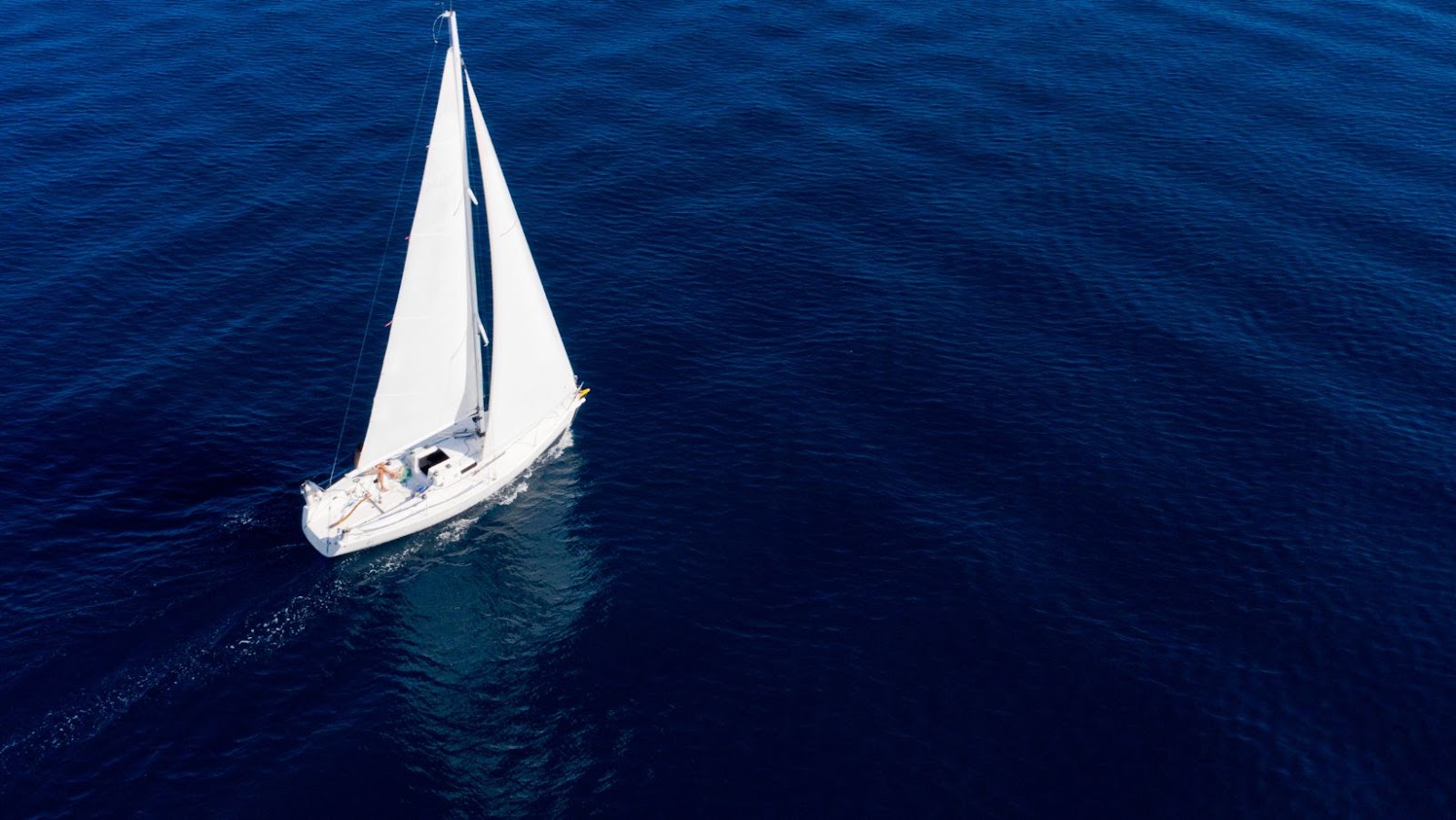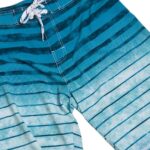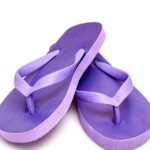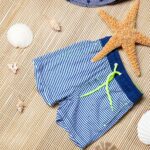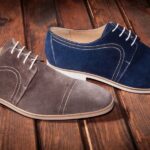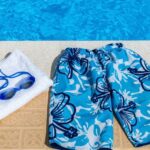What to Wear Sailing in The Summer
To dress perfectly for your summer sailing adventure, use clothing essentials for sailing in summer with comfortable and breathable shirts, lightweight shorts or pants, waterproof jacket, hat with wide brim, sunglasses and sunscreen, non-slip shoes as a solution briefly introduced in sub-sections.
Comfortable and Breathable Shirts
Achieving comfort and breathability in summer sailing outfits is crucial for an enjoyable experience. Here are some essential tips on what to look for when choosing comfortable and breathable shirts:
- Opt for fabrics that have moisture-wicking properties, such as polyester or nylon blends.
- Consider shirts with mesh panels or ventilation holes to promote air flow.
- Choose shirts with a loose fit to allow for movement and circulation.
- Stick to light and bright colors that reflect the sun’s rays, rather than dark colors that absorb heat.
It’s also important to note that some materials, such as cotton, may not be ideal for sailing as they are prone to retaining moisture and can become heavy and uncomfortable. Instead, look for synthetic or quick-drying materials.
Pro Tip: Protect your skin from the sun’s harmful UV rays by investing in shirts with UPF protection ratings.
Show off your sea legs with these lightweight shorts or pants, and by sea legs I mean your ability to keep your balance after downing too many summer cocktails on deck.
Lightweight Shorts or Pants
Lightweight Bottom Wear for Smooth Sailing in Summer
Be it shorts or pants, lightweight and breathable fabrics are a sailor’s best friend on hot summer days. Here are six essential features to look for in your lightweight bottom wear:
- Quick-drying material to prevent discomfort from sweat
- Ample pockets for easy access to essentials
- Elastic waistbands or adjustable drawstrings for flexibility and comfort
- UV ray protection to shield your skin from the sun’s harmful rays
- Durable stitching that can withstand wear and tear at sea
- Neutral colors that won’t attract heat and can be easily paired with various tops.
When choosing lightweight bottom wear, it’s important to keep in mind the activity level and type of sailing you’ll be doing. Opt for longer pants when expecting rougher waters or cooler evenings, whereas shorts might be a better fit for calmer waters or hotter, muggier climates.
According to a report by Boating Magazine, wearing loose-fitting clothes can lead to more wind resistance and slower speeds during sailboat races. Therefore, selecting the right fit is also critical for optimum performance.
Sailing without a waterproof jacket is like trying to drink a margarita without salt – it’s just not the same.
Waterproof Jacket
As a vital piece of clothing for sailing in summer, the protective outer layer must be readily available. The ‘Water-Resistant Cover’ is an essential item to protect sailors from any unpredictable weather conditions on open water.
- A high-quality material that will keep your clothes dry during rainfall.
- The jacket must have a hood that can shelter your head and neck from a downpour.
- The jacket should have adjustable cuffs and waist to keep water out effectively.
- A lightweight design which does not limit movement during sports activities such as hauling ropes or handling sails.
- Must be durable against possible tears or snag risks, often seen while sailing.
For those new to sailing, investing in a Water-Resistant Coat for safety is an asset. It’s also crucial to understand the differences between waterproof materials vs. water-resistant materials.
True history shares stories of sailors who faced dangerous weather conditions without proper protection and regretted it. The importance of water-resistant jackets was learned through times when their presence would have prevented problems for them. Today, with advancing technology, they are readily accessible for anyone looking to sail during summer while keeping safe and dry.
Protect your face from the sun and your dignity from questionable fashion choices with a trusty wide-brimmed sailing hat.
Hat with Wide Brim
With the scorching heat of summer, sailing requires a wide-brimmed hat to provide ample shade and protection from harmful sun rays. This headwear is not only fashionable but also practical during sailing trips.
Here are six essential points regarding the importance and practicality of a wide-brimmed hat for sailing in summer:
- A hat with a wide brim can block up to 98% of the UV radiation from the sun.
- The brim can also shield your eyes, face, neck, and ears from direct heat exposure.
- A lightweight and breathable material such as cotton or straw is ideal for warm weather conditions.
- Make sure that the hat fits snugly yet comfortably on your head to avoid it flying off due to strong winds while sailing.
- Opt for a neutral color or darker shade to minimize glare while sailing on bright sunny days.
- It serves as an excellent accessory to complete your nautical outfit while providing added sun protection.
When choosing a hat with a wide brim, consider additional features such as water resistance, ventilation holes, adjustable straps or chin cords for extra security.
Pro Tip: Pair your wide-brimmed hat with sunglasses and sunscreen for ultimate protection against sun damage.
Don’t forget your sunglasses and sunscreen, unless you want to resemble a boiled lobster by the end of your yacht trip.
Sunglasses and Sunscreen
To protect yourself from the scorching sun while sailing, it is crucial to equip yourself with appropriate measures such as eye protection and skin care. Here are some vital details on eye protection and skincare essentials:
- Wear polarized sunglasses – Choose polarized sunglasses over fashion glasses to prevent glare and keep your eyes protected from harmful UV rays.
- Invest in high-quality sunscreen – Choose sunscreen that provides broad-spectrum coverage against UVA and UVB rays with at least 30 SPF. Apply generously throughout the day, especially on exposed areas.
- Take a hat with a brim – A wide-brimmed hat or baseball cap can help protect the face, ears, nose and neck from sunburn, reducing the risk of skin cancer.
- Avoid peak hours – Avoid extreme heat by steering clear of peak hours between 10 am and 4 pm when the sun is at its strongest.
- Stay Hydrated – To prevent dehydration in summer weather be sure to drink plenty of water during your sailing excursion
Remember that UV exposure may lead to uncomfortable effects like sunburns, premature aging, or worse, skin cancer. So take utmost care of your eyes and skin while enjoying your sailing adventure.
Besides these tips, use rash guards made from UV-blocking fabric for additional sun protection. These shirts are comfortable to wear in humid weather as they wick moisture away quickly. By following these guidelines closely, you can sail comfortably without worrying about common sun-related health problems.
If you’re slipping and sliding on the boat deck, it’s probably time to invest in some non-slip shoes – unless you want to test your seaworthiness by trying to stay upright in flip flops.
Non-Slip Shoes
When sailing in summer, it’s important to choose shoes that provide a firm grip and prevent slips on the wet boat deck. These shoes should also be comfortable for extended periods of time. Here are three key features to consider:
- Non-slip soles: The best shoes for sailing have rubber soles with deep tread patterns or special grip-enhancing technology to ensure stable footing on a wet deck.
- Closed-toe design: Sailing can be dangerous, so it’s important to choose shoes that protect your feet from sharp objects and potential injuries like stubbing a toe.
- Breathable materials: Since sailing is often done in hot weather, look for breathable fabrics like mesh or perforated leather to keep your feet cool and dry.
It’s important to note that these features apply not only to sailing but also any water activity where you’re likely to encounter slippery surfaces.
In addition, make sure you choose shoes that fit well and provide sufficient support for your arches and ankles. Don’t forget to break them in before hitting the waves!
Fun Fact: During the Age of Sail in the 16th – 19th centuries, sailors wore leather boots with wooden soles called “sabots.” These sabots were an early form of non-slip footwear as the wooden sole provided traction on wet decks.

Accessories for Sailing
To accessorize for sailing in the summer with the right gear, you will need life jackets/personal flotation devices, navigation tools, a water bottle and snacks, and dry bags. Each of these sub-sections offers a unique solution to make your sailing experience safer, more comfortable, and more enjoyable.
Life Jackets/Personal Flotation Devices
As a sailor, choosing the right gear is essential for a safe and enjoyable experience on the waters. One of the most important accessories to have is Personal Flotation Devices (PFDs) or Life Jackets, which are devices designed to help keep you afloat in case of an accident.
Here are five key points about PFDs:
- They come in various types and styles, including inflatable and non-inflatable designs.
- The most common type is Type III PFD, which is designed for water sports activities such as canoeing and kayaking.
- PFDs should fit properly – not too loose or tight – to ensure maximum safety.
- They should be worn at all times while on board and during any water-related activities.
- It’s important to regularly check your PFD for damage or wear and tear before using it.
Additionally, some PFDs come with unique features such as built-in whistles or lights that can be helpful in emergency situations.
One example of how crucial PFDs can be dates back to the early 20th century when a shipping disaster occurred off the coast of Newfoundland. After the sinking of RMS Titanic in 1912, regulations were put in place requiring all ships to carry enough lifeboats for every person on board. In 1914, RMS Empress of Ireland collided with another ship and sank within minutes. While there were enough lifeboats onboard, many passengers lost their lives due to the cold waters. This tragedy led to the creation of inflatable life rafts and improved life jackets that would help prevent similar accidents from occurring in the future. Remember – safety first always when sailing!
Navigation Tools
The essential gadgets and tools required for correct maritime navigation are crucial to ensure the sailors’ safety and timely arrival at their desired destination. Here are some must-have devices:
| Compass | Navigational Chart |
| Sextant | GPS |
| Binoculars | Barometer |
These Navigation Tools cater to various navigational requirements such as determining the ship’s position, the depth of water, free from obstacles, and safe anchorage positions. The onboard compass is an essential gadget that guides sailors without external power consumption. Nevertheless, Navigational Charts and GPS indicate the vessel position with comprehensive details on ocean depths, harbours, shipping lanes, tides & currents, region-specific information; they assist in establishing efficient navigational planning.
It is noteworthy that Sextants determine accurate angles between two visible objects to navigate correctly in foggy or cloudy weather conditions when visibility is minimal. Binoculars improve visibility by magnifying far-off landmarks while giving visual cues about wind changes or potential threats around the vessel. Moreover, Barometers predict weather changes based on air pressure fluctuations.
Water Bottle and Snacks
Keeping yourself energized and hydrated is crucial when you’re out sailing on the open waters. So, what are some essential things to carry with you?
- A water bottle: Choose a leak-proof, durable, and reusable water bottle that can hold enough liquid for several hours. Opt for an insulated one to keep your water cold on hot days.
- Energy-boosting snacks: Pack non-perishable snacks like nuts, dried fruits, energy bars or trail mix. These will provide you with the necessary fuel when you’re feeling low on energy.
- Fresh fruits: Include fresh fruits like apples, bananas or oranges as they are easy to peel and eat while on board.
- Sports Drinks: You lose electrolytes through sweat during hot weather conditions, drink sports drinks occasionally to replenish lost salts.
It’s important to make sure you stay hydrated throughout the day by sipping water frequently. Keep your snacks in small portions that can be eaten easily without getting soggy in the salty sea breeze.
When it comes to choosing snacks for a sailing trip, steer clear of foods that contain high amounts of salt and sugar as these can increase dehydration levels. Remember to dispose of any waste carefully.
Carry enough food and drinks for the entire time you plan to spend at sea – it’s always better to have more than needed in case of unexpected delays.
When it comes to keeping your belongings dry while sailing, a dry bag is just as important as a waterproof jacket – unless you fancy wearing a soggy smartphone around your neck as a fashion statement.
Dry Bags
Ensuring that your belongings stay dry during sailing is paramount to a successful and enjoyable trip. Here are some essential items for keeping your possessions safe onboard:
- Waterproof Pouches: These small but highly durable pouches protect small electronics, cash, and documents from water damage. They’re perfect for carrying essentials like your phone and wallet.
- Dry Sacks: Available in various sizes, dry sacks keep your clothes and personal gear dry even if they fall into the water. They are ideal for extended trips where you need to carry more equipment.
- Deck Bags: Deck bags attach to the lifelines of your boat or can be worn as a backpack. They are perfect for day trips and keep your gear within reach while on deck.
- Waterproof Backpacks: For longer journeys, waterproof backpacks offer ample storage space while providing protection against the elements. Most models have roll-top closures to prevent water from seeping through.
Investing in reliable waterproof gear ensures that you’ll have all your necessary items within reach throughout any sailing adventure.
To avoid any disappointment or mishaps on your next sailing excursion, make sure to pack accordingly with these essential dry bags! From sunscreen to full-body suits, dressing for different sailing conditions is like playing dress-up, but with the added danger of drowning.
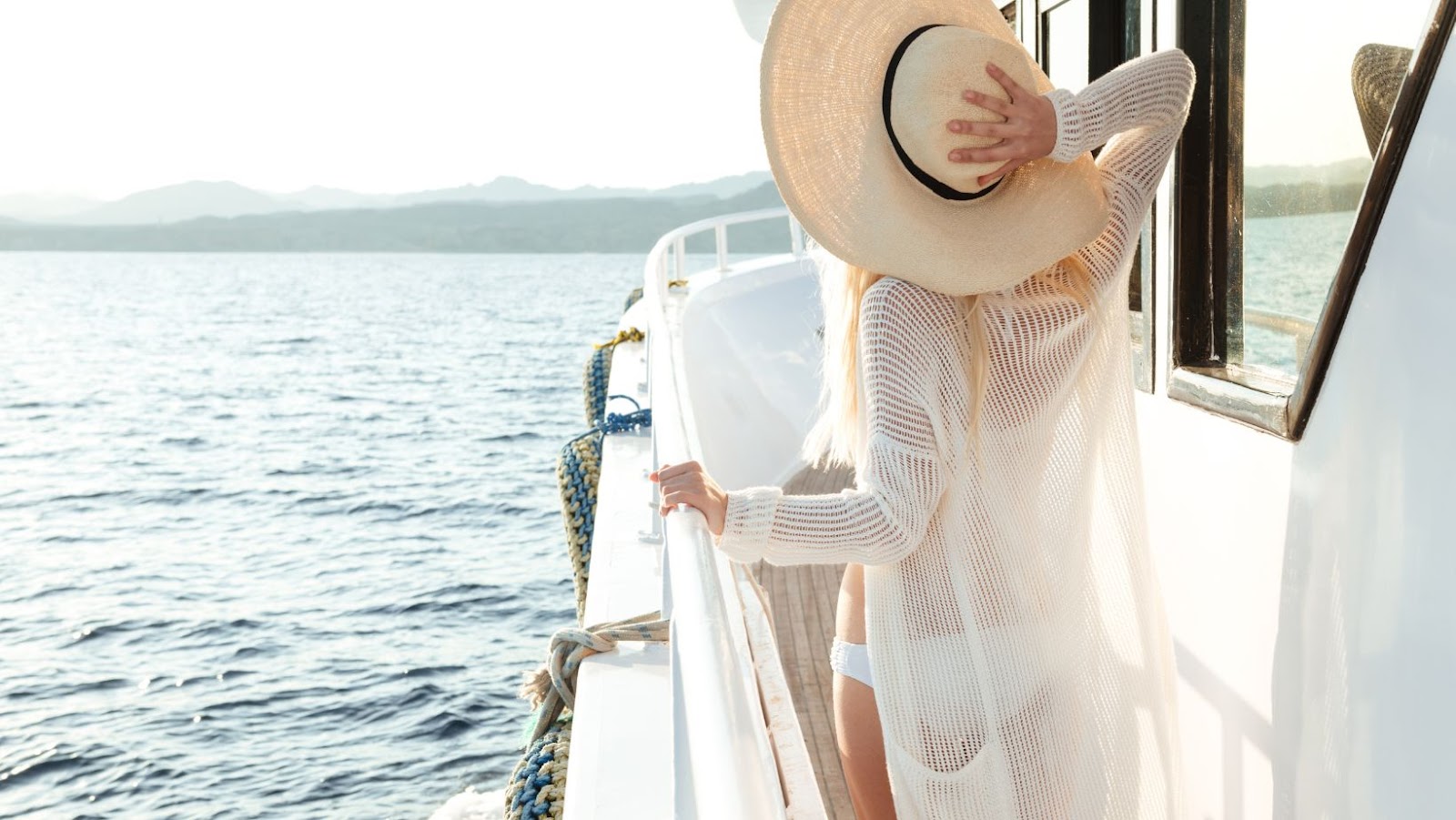
Dressing for Different Sailing Conditions
To dress well when sailing in the summer with the right clothes for different sailing conditions, read on. You need to accommodate everything from cool and windy conditions to hot and sunny conditions, and even rainy and stormy conditions.
Cool and Windy Conditions
When met with chilly gusts and fresh breezes, it’s essential to layer up for optimal performance and comfort. Temperature-regulating base layers combined with wind-blocking mid-layers and waterproof outerwear, help balance warmth and moisture. Dress in materials that wick sweat away from the skin whilst maintaining insulation such as merino wool or synthetic fleece. Avoid cotton, which can retain moisture leading to hypothermia.
In such conditions, it’s vital to protect the extremities, including hands, feet, head, and ears with appropriate gear such as gloves, socks, beanies and scarfs. Wind-resistant sunglasses or goggles would also ensure good visibility onboard. Ensure your clothing is loose enough to move freely but not too baggy; performance is affected by excess material flapping against the body at high speeds.
Additionally, remember to consume warm beverages at regular intervals to maintain core temperature throughout your voyage. If possible install a heating source onboard vessel to keep you comfortable for extended periods on cold nights out on anchor!
On one particularly windy day in San Francisco Bay during racing season a few years back our crew had underestimated the forecasts of the local weather service; triple reefing our mainsail wasn’t enough given the 25 knots+ wind gusts we encountered halfway through. After two sharp jibes which caused gear damage and soaked us through despite multiple layers of vented gear we realized that investing in well-made sailing rain jackets would have been worthy – rather than losing gear and compromising safety!
Hot and Sunny Conditions
When the weather is scorching and the sun is shining bright, there are specific dressing guidelines that one must follow while sailing. Loose-fitting clothes made of breathable fabrics like cotton are a perfect fit for this condition. These clothes let air circulate easily, allowing your body to perspire without trapping heat, preventing dehydration.
Long-sleeved shirts and pants will also help in protecting you from too much sun exposure while keeping you cool at the same time. Don’t forget to wear sunglasses and a hat to shield your eyes and face from direct sunlight.
It’s essential to apply sunscreen on exposed skin every few hours as it helps avoid sunburns on sensitive areas like neck, ears, hands and feet. Avoid dark colours as they tend to absorb more heat giving less ventilation.
While these guidelines may prove helpful when dressing for hot and sunny sailing conditions, remember to factor in unique personal preferences or medical necessities.
Rainy and Stormy Conditions
When the weather turns wet and tempestuous, seafarers need to be prepared for the harsh conditions of the sea. It’s essential to dress in effective gear that can withstand heavy rain and strong winds while being comfortable to wear. Ensuring waterproof gear is a priority, alongside layering clothes for warmth protection.
Opting for a wetsuit over other types of clothing would be ideal, mainly if one plans to sail through tumultuous weather conditions. Foul-weather jackets, pants, gloves, shoes or boots are also essential as they keep sailors warm even in the coldest storms.
It’s also vital to consider the type of sailing vessel when contemplating protection against rainy and stormy conditions. The size and stability determine how rough weather affects it. Smaller vessels like sailboats may capsize easily compared with larger ones that can handle more unpredictable weather patterns.
Once during an unexpected thunderstorm off the coast of Florida, Alex honed his rain-sailing skills when he had to battle intense waves and high winds for hours on end. He had chosen to put on an excellent protective foul-weather outfit which kept him dry from head-to-toe despite enduring several rounds of heavy rain showers.
Remember, your clothes shouldn’t just survive the sailing conditions, they should outlast even the most dramatic boat flips.
As we embark on summer sailing trips, it is important to dress appropriately to ensure safety and comfort in the ever-changing marine environment. Opt for lightweight and breathable fabrics that provide protection from sun and wind but are easy to move around in. Consider layering clothing and always wear a life jacket. Bring along appropriate footwear for wet decks and consider a hat or sunglasses for eye protection.
Furthermore, take into account the location and duration of sailing, as water temperature can vary greatly. Always pack an extra set of clothes in case of unexpected changes in weather. Avoid cotton clothing as it retains moisture and can become uncomfortable during long periods of exposure to water.
It is also essential to check weather forecasts before setting sail to avoid any potential risks or surprises. Be prepared with rain gear if necessary.
In addition, familiarize yourself with local regulations regarding boating attire and equipment requirements.
In true history, dressing appropriately for sailing has been a longstanding practice since ancient civilizations utilized boats as their primary form of travel. Today’s modern sailors have access to advanced technology in materials and equipment, but the fundamental principles remain consistent – safety, comfort, and respect for the natural surroundings.

